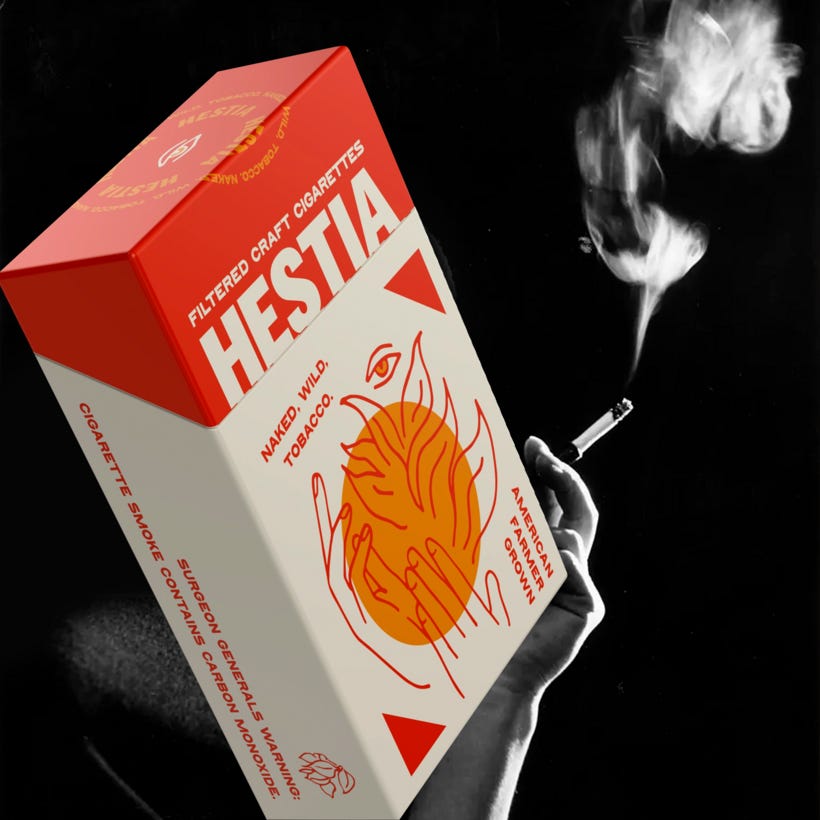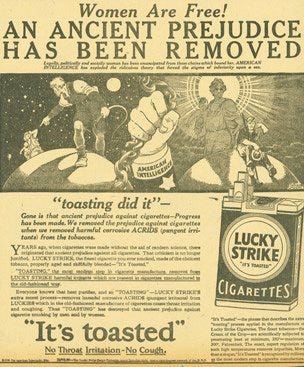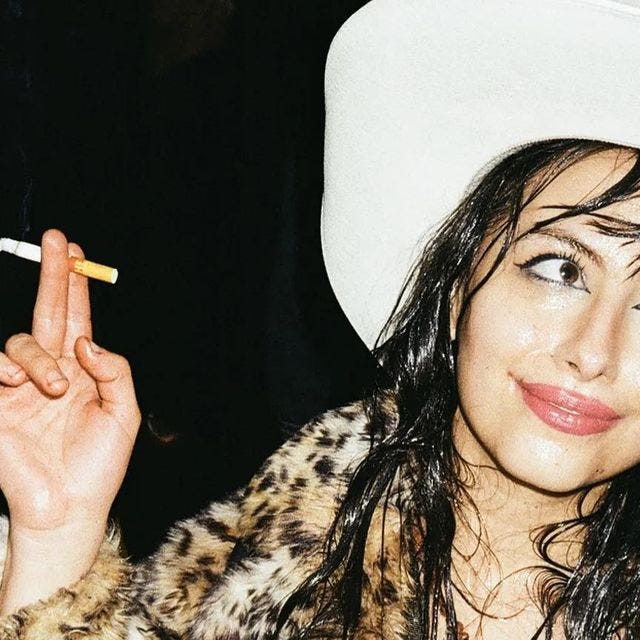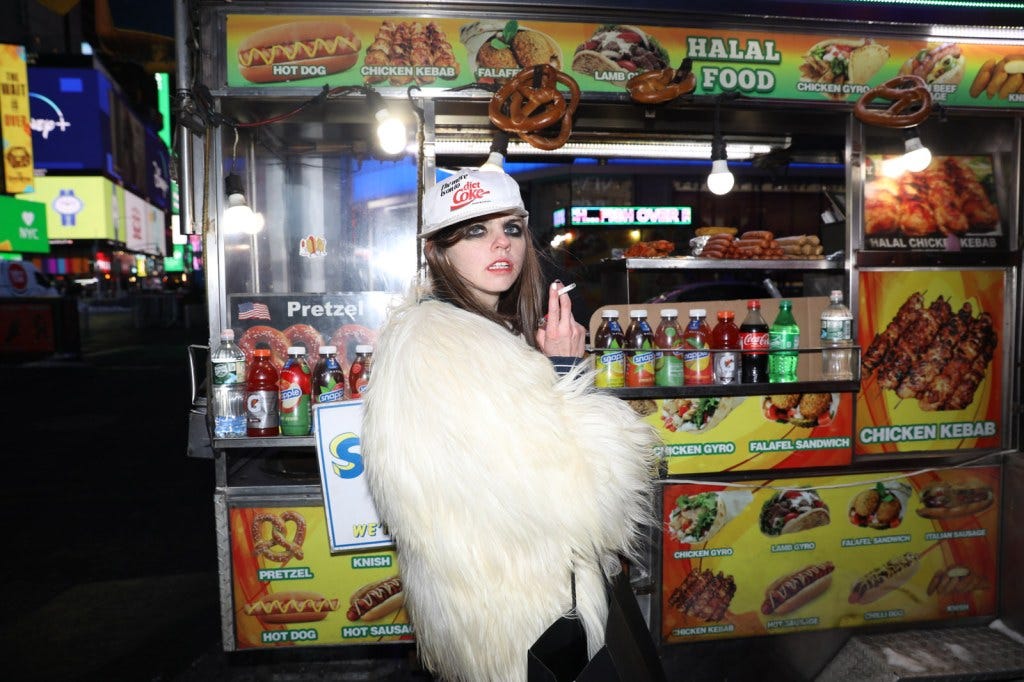Stroll down any street in any major city in the world, and you’re guaranteed to be confronted with a handful of distinct aromas dominating the airwaves - thick plumes of watermelon ice vape, whiffs of weed, perfume (most likely Santal 33). But none is quite as familiar yet polarizing as the aroma of cigarettes. It’s a scent that’s inextricably linked to the very idea of nightlife, hedonism and reckless abandon.
It’s also the one consumer good that is the most demonized, the one governments and policymakers are most hellbent on eradicating. Almost every market in the world requires tobacco companies to print health warnings on their products, with countries including New Zealand aiming to eradicate smoking entirely for the next generation (with good reason, of course: the CDC reports that cigarette smoking is after all responsible for more than 480,000 deaths annually in the US — or 1,300 people every day).
It’s in this climate of tobacco vilification that I was surprised to encounter Hestia, a new, tastefully designed “natural” cigarette brand, and the first tobacco product to get F.D.A. approval in more than 15 years. The packaging and website aesthetics are reminiscent of the trendy direct-to-consumer product playbook: bright orange with a Lichenstein-like design on the front and literary quotes from the likes of Hemingway and O'Hara printed on the back. Its launch strategy has not been dissimilar to that of a cool new perfume or makeup brand. Hestias were handed out at the NYC restaurant Grotta during a Fashion Week party put on by Perfectly Imperfect (the human curation newsletter documented in idle gaze 033), as well as a bash celebrating the apparel brand Celine in LA and at celebrity grifter Anna Delvey’s birthday party earlier this year.
While on the surface it might seem like smoking is on the decline (14% of Americans smoked in 2019, compared to nearly 21% in 2005, according to an annual report from the C.D.C. that tracks smoking rates), Hestia’s emerging popularity represents a refreshed cultural cachet for cigarettes. Move past the initial finger-wagging and warning labels, and you’ll discover a steady wave of pro-smoking sentiment.
Over at r/cigarettes, a more active community than ever shares daily smoking rituals and favourite brands, while Instagram pages like cigfluencers celebrate celebrities who love to light up.
When actress Jenna Ortega, star of the Netflix show Wednesday, was recently filmed smoking a cigarette, it initially sparked outrage among the tabloid press and her fans. But it also unearthed a surprisingly vocal pro-smoking faction on Twitter. Some of it satirical shitposting (see below), but much of it sincere outrage against what they believe to be draconian anti-smoking attitudes flooding modern society.
As we enter the enduring long tail of the pro-goblin, indie sleaze era, the runway was clear for a smoking hot cigarette revival as the ultimate means of rejecting wellness culture. And with sugary-synthetic, plastic vapes taking over the world, cigarettes promise a nostalgic, grown-up and “organic” nicotine-based product of choice. In a world that increasingly favours natural ingredients, cigarettes have the upper hand against chemical e-variants. A pack of organic tobacco ciggies are positioned as the perfect accompaniment to your natty, no-additive wine and bio whole foods snacks.
As the pendulum swings back from the impossibly clean and minimal illusion of the early-rising, yoga-practising, kale-smoothie blending archetype to a greater acceptance of trainwreck pursuits of self-indulgence and pleasure-seeking, it’s no surprise that the vice most detrimental to our health has emerged again as the ultimate representation of social defiance.
It’s also no surprise because this is not the cigarette’s first ride around the trend cycle merry-go-round. Ciggies have a long, repeated history of representing a rebellious fight against cultural norms.
During the early twentieth century first-wave feminism in the United States, psychoanalyst A. A. Brill and public relations executive Edward Bernays concocted a campaign spearheaded by the phrase"Torches of Freedom" to encourage women's smoking in the face of social taboo. Bernays hired women to march while smoking their "torches of freedom" in the Easter Sunday Parade of 1929, which was a significant moment for fighting social barriers for women smokers. As a result, cigarettes came to symbolize the fight for equal rights, representing "rebellious independence, glamour, seduction and sexual allure for both feminists and flappers."
As cigarettes were painted as a symbol of emancipation in an age of strict social policing, throughout the last century the product has also metamorphosed into a supposedly vital creative stimulant for artistes of all kinds. But no bond is stronger than the image of the pensive writer and their cigarette, who wistfully contemplates their next sentence in a plume of poisonous tobacco fumes.
In
’s exploration of the current cigarette renaissance, Max unpacks a number of pro-smoking positions, including an argument that emerged in the 90s - supported by contrarian intellectuals including former Harper’s editor Lewis Lapham and Christopher Hitchens - that the end of widespread smoking killed literature:Kiernan’s sweetest note is struck when he contemplates the wondrous effect of tobacco on the creative juices. Having reviewed the emancipating influence of a good smoke on the writing capacities of Virginia Woolf, Christopher Isherwood, George Orwell and Compton Mackenzie, he poses the large question whether ‘with abstainers multiplying, we may soon have to ask whether literature is going to become impossible – or has already begun to be impossible.’
These sentimentalized ideas of people and places, redolent with the scent of cigarettes, are very much a recurring theme in culture. In the past, it was about imagining Hemingway and O’Hare with smoky ashtrays next to their typewriters. Today, people are beginning to pine over memories of pre-indoor smoking ban days, when the smell of stale smoke would hit your nostrils as you entered pubs, bars and downtown restaurants. As Jason Stewart reminisces in his ode to smoking in
:The Tiki Ti crammed 50 chain smokers into a bar the size of my master bath. After one Singapore Sling, your underwear would smell like a carton of Pall Malls. But eventually, the jig was up. America’s carpets and curtains began healing again, the war on smoking indoors was over, and despite looking hotter and having more fun, the allied forces of cig were inevitably outnumbered by the lily-livered gum chewers.
And while the battle against smoking indoors was won across the majority of economically developed countries, the war against cigarettes is still being fought. But now, the torch has been passed down from flappers and eccentric magazine editors to a new social strata with contempt for social shaming and public-health measures. This includes, most notably, downtown NYC scene kids who are lighting up to make a rebellious statement.
It’s a tale as old as time: the act of suppression only makes the forbidden fruit even more appealing. As Gen Z influencer Meg Superstar Princess proclaimed in a recent NY Post article on Gen Zs picking up smoking:
“By making cigarettes taboo and ridiculously censored, they became cool for young people…I know cigarettes are terrible for you. But everybody looks cool with a cigarette … You have to pick your vices in life.”
Here in Berlin, somewhat anachronistically, smoking is still often permitted inside. On some level, it seems to be tied to a desire to cling to an idea of the past. The same seems to ring true for the global cigarette revival. By clutching onto a Marlboro Red or Davidoff Slim, one is clutching on to a nostalgia for a more carefree past, one where people seemed less anxious, less perpetually stressed and less isolated.
When the US Surgeon General back in May announced loneliness as the latest health epidemic, he exclaimed that the negative impact of solitude is equivalent to “smoking 15 cigarettes a day”. With this analogy in mind, perhaps there’s some valid justification for picking up such an unhealthy vice. Maybe a cigarette every once in a while isn’t so bad, if it means creating an excuse to strike up a conversation outside a restaurant, the chance of a serendipitous connection after asking a stranger for a lighter. Underneath the youthful and cocky defiance, maybe there’s a more tender reason for the ciggie comeback. Maybe people just want an excuse to feel less lonely.











I think there's a lot of truth to the smoking bans leading to loneliness. Looking back most of my friendships were centered around smoking. In my teens it was all about smoking at coffee shops and concerts, later we always hung out at bars with outdoor areas where we could all smoke, during my time in the military almost all of my friends were met through smoke breaks. Without cigarettes there isn't a need to sit and slow down.
I love smokes. I quit because it was making my kid sad. But Im gunna get back into it.
Thanks bro. ! You rock :) FREEEEEEEEEEEEEEEEEEEEEEDOOOOOOOOOOOOOM